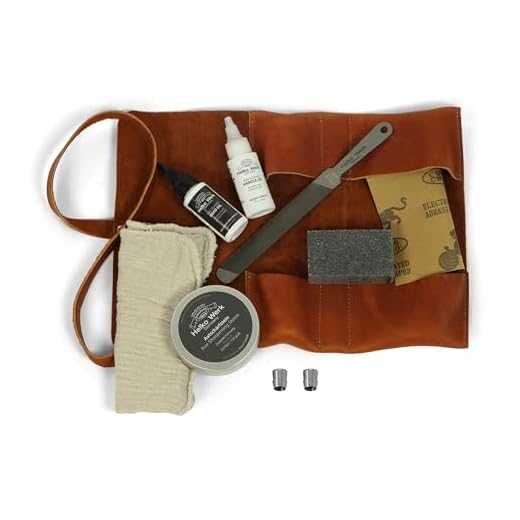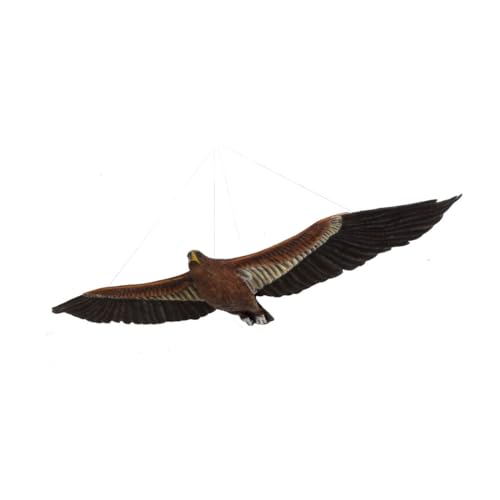




Have you recently stumbled upon an old, rusty axe in your shed or garage? Don’t worry, with a little bit of elbow grease and the right techniques, you can restore it to its former glory. Rust can not only ruin the appearance of your axe, but it can also weaken its structure, making it less effective when it comes to chopping wood. That’s why it’s important to remove rust as soon as you spot it, in order to preserve and prolong the life of your trusty tool.
Step 1: Assess the Damage
Before you start tackling the rust, take a moment to inspect your axe. Determine how extensive the rusting is and whether or not it has caused any damage to the blade or handle. It’s essential to be aware of any potential weaknesses or cracks that the rust may have caused, as you may need to perform additional repairs or replacements once the rust is removed.
Remember: Safety First
Step 2: Gather Your Supplies
Now that you know what you’re dealing with, it’s time to gather the necessary supplies. Here’s what you’ll need:
- A wire brush or steel wool
- A solvent, such as white vinegar or lemon juice
- A plastic container or bucket
- A cloth or rag
- A protective coating, such as oil or wax
Make sure you have everything readily available before you start the rust removal process, as it will save you time and effort.
Step 3: Remove the Rust
Using the wire brush or steel wool, vigorously scrub the rusty areas of your axe. Apply consistent pressure and work in small, circular motions to effectively remove the rust. For more stubborn rust, you may need to dampen the brush or wool with the solvent of your choice. Regularly dip the brush or wool in the solvent to help break down the rust.
Tip: Consider wearing gloves and protective eyewear to prevent any injury or irritation from the rust or solvents.
Step 4: Rinse and Dry
Once you have removed the rust, rinse your axe thoroughly with water to remove any remaining solvent. Pat it dry with a cloth or rag, making sure all moisture is gone. Any moisture left behind can quickly lead to the formation of new rust.
Step 5: Protect and Maintain
To prevent rust from returning, apply a protective coating to your axe. This can be done by simply applying a thin layer of oil or wax to the entire surface of the tool and allowing it to dry. This protective coating will act as a barrier, preventing moisture and oxygen from reaching the metal and causing rust.
Now that you know how to remove rust from an old axe, you can rescue your trusty tool and put it back to work. Remember to clean and inspect your axe regularly to catch any rust early on, ensuring it remains in good condition for years to come.
Why removing rust from old axe is important
Rust is a common problem that affects many metal tools and objects, including old axes. Over time, the iron in the axe’s blade reacts with moisture and oxygen in the air, resulting in the formation of rust. While some people may consider rust to be merely a cosmetic issue, it can actually have significant implications for the performance and longevity of an axe.
One of the main reasons why removing rust from an old axe is important is because it can compromise the axe’s functionality. Rust can weaken the metal and make the axe more prone to chipping, cracking, or breaking. This not only affects the axe’s ability to cut efficiently, but it can also pose a safety hazard to the user. A rusty axe blade may not provide a clean and precise cut, which could result in accidents or injuries.
In addition to affecting the axe’s performance, rust can also accelerate the deterioration of the metal over time. If left untreated, the rust can spread and penetrate deeper into the metal, leading to irreversible damage. This can ultimately reduce the lifespan of the axe and make it unusable.
Furthermore, removing rust from an old axe can help to restore its aesthetic appeal. Many people collect and appreciate old axes for their historical and decorative value. By removing the rust and revealing the original surface of the metal, the axe can be restored to its former glory and enhance its visual appeal.
Overall, removing rust from an old axe is important for both practical and aesthetic reasons. It helps to maintain the axe’s performance, extend its lifespan, and enhance its appearance. With the right techniques and tools, it is possible to effectively remove rust and restore an old axe to its original condition.
Tools performance
Having well-functioning tools is essential for any task, especially when it comes to removing rust from an old axe. The performance of your tools directly affects the efficiency and effectiveness of your work. Here are some tips to ensure optimal tools performance:
|
1. Regular cleaning and maintenance: Hot Pick
Q61 All-Purpose Rust Resistant Lubricant Powerful cleaning and rust prevention
The Q61 lubricant effectively cleans and protects metal tools from rust and dirt, making it an essential product for maintaining machinery and hardware in optimal condition.
|
Keep your tools clean and free from debris after each use. Regularly inspect them for any signs of wear or damage, and address them promptly to prevent further deterioration. |
|
2. Proper storage: |
Store your tools in a dry and well-ventilated area to prevent rust and corrosion. Consider using toolboxes, pegboards, or wall-mounted organizers to keep them organized and easily accessible. |
|
3. Sharpening and honing: |
Regularly sharpen and hone the edges of your tools to ensure they perform at their best. Dull blades or edges can not only compromise their effectiveness but also put your safety at risk. |
|
4. Lubrication: |
Apply lubricating oil or appropriate rust-resistant coating to metal parts to prevent friction, rust, and corrosion. This will help your tools operate smoothly and extend their lifespan. |
|
5. Replacement and upgrading: |
Over time, tools can become worn out or obsolete. If repair is no longer an effective option, consider replacing them with newer models or upgrading to more advanced tools that better suit your needs. |
By following these tips, you can ensure the optimal performance and longevity of your tools, allowing you to tackle any rust on your old axe with ease.
Safety precautions
When removing rust from an old axe, it is important to prioritize safety by following these precautions:
| 1. | Wear protective gear: | Make sure to wear gloves, safety goggles, and a dust mask to protect yourself from any potential hazards that may arise during the rust removal process. |
| 2. | Choose a well-ventilated area: | Perform the rust removal process in a well-ventilated area or consider working outdoors to avoid breathing in any potentially harmful fumes. |
| 3. | Secure the axe: | Ensure that the axe is securely clamped or held in a stable position to prevent any accidental movements or slips that could lead to injuries. |
| 4. | Use appropriate tools: | Only use tools specifically designed for rust removal on metal surfaces. Avoid using excessive force or tools that could cause damage to the axe or yourself. |
| 5. | Follow instructions: | Read and follow the instructions provided by the rust removal product manufacturer carefully to ensure the safe and effective use of the product. |
| 6. | Dispose of waste properly: | Dispose of any rust flakes or waste materials in accordance with local regulations and guidelines to minimize environmental impact and prevent any potential harm. |
By taking these safety precautions, you can safely remove rust from your old axe and restore it to its former glory.
Step-by-step rust removal process
Removing rust from an old axe requires a systematic approach to ensure the best results. Follow the step-by-step process below to effectively remove rust and restore your old axe:
1. Safety first
Prior to starting the rust removal process, it is important to prioritize safety. Wear protective gloves and safety goggles to protect your skin and eyes from any potential harm.
2. Gather supplies
Collect all the necessary supplies for rust removal. You will need:
| – White vinegar | – Baking soda |
| – Steel wool or wire brush | – Cloth or sponge |
| – Rust converter | – Lubricating oil |
3. Cleaning the axe
Start by cleaning the axe with mild soap and water. Remove any dirt or debris that may be present on the surface. Wipe it dry with a cloth or sponge.
4. Soaking in vinegar
Fill a container or a bucket with white vinegar and submerge the rusty parts of the axe. Let it soak for a few hours or overnight, depending on the severity of the rust. The vinegar will help dissolve the rust.
5. Scrubbing
After soaking, take the axe out of the vinegar and use steel wool or a wire brush to scrub off the loosened rust. Apply some baking soda to create a paste and scrub the rusty areas until the rust is completely removed.
6. Applying rust converter
Once the rust is removed, rinse the axe with water and dry it thoroughly. Apply a rust converter to the affected areas using a brush or a cloth. The rust converter will help prevent future rusting.
7. Lubricating and maintenance
After the rust converter has dried, apply a thin layer of lubricating oil to the axe. This will help protect the metal and prevent further rusting. Regularly clean and oil your axe to maintain its condition.
By following these steps, you can effectively remove rust from your old axe and restore it to its former glory. Remember to always prioritize safety and take proper care of your tools to prolong their lifespan.
Maintenance tips to prevent future rusting
Once you have successfully removed the rust from your old axe, it’s important to take steps to prevent it from rusting again in the future. Here are some maintenance tips to help you keep your axe in great condition:
| 1. | Keep your axe clean and dry: | After each use, make sure to clean any dirt or debris off your axe and dry it thoroughly. Moisture is one of the main causes of rust, so keeping your axe dry is essential. |
| 2. | Apply a protective coating: | Coating your axe with a thin layer of oil or wax can help protect it from moisture and prevent rust from forming. Be sure to apply the coating to both the head and the handle of the axe. |
| 3. | Store your axe properly: | When you’re not using your axe, store it in a dry place away from any sources of moisture. Consider using a dedicated axe rack or sheath to keep it protected. |
| 4. | Regularly inspect for rust: | Check your axe regularly for any signs of rust. Catching it early can help prevent it from spreading and causing further damage. If you notice any rust, use the rust removal methods mentioned earlier to address it promptly. |
| 5. | Sharpen your axe regularly: | A sharp axe is not only more effective but also less likely to get stuck in the wood, which can cause scratches and expose the metal to moisture. Regularly sharpening your axe will help maintain its cutting edge and reduce the risk of rusting. |
By following these maintenance tips, you can keep your old axe in excellent condition and prevent future rusting. Remember, a well-maintained axe will last you for many years to come!







